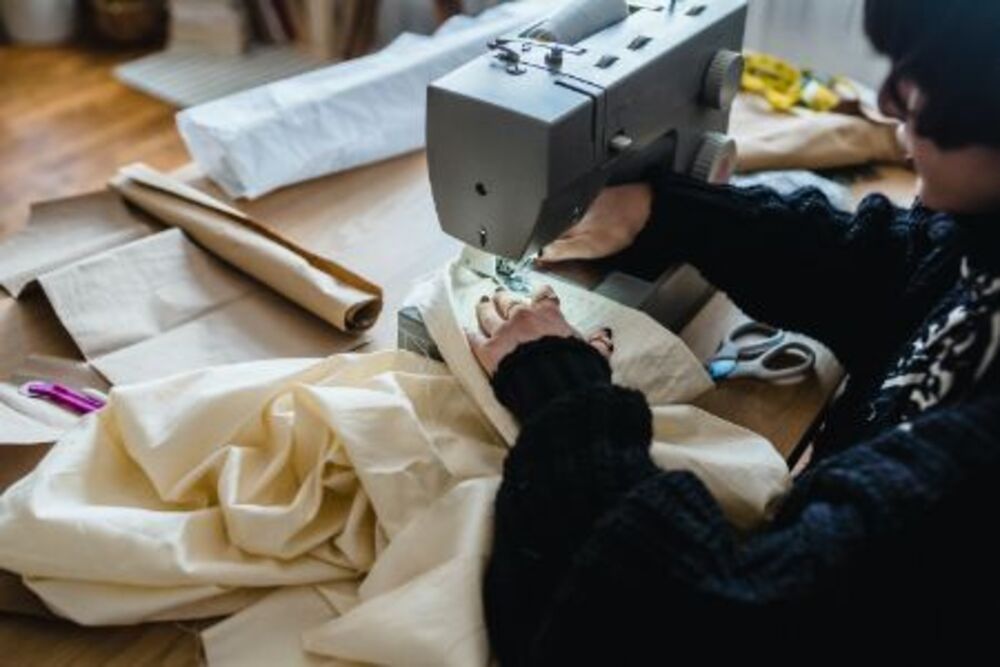Mechanical sewing machines were introduced during the initial industrial revolution to reduce manual sewing work performed by clothing companies and decrease manual sewist workload. Walter Hunt was the first inventor to design a machine which did not imitate hand sewing; Isaac Merritt Singer soon after created a similar model.
1. A machine for stitching
Sewing machines are used to stitch fabric and materials together. Sewing machines reduce manual labor required in producing textiles such as garments and other textiles, improve stitch quality, and can even reduce seam gaps between stitches and seams. There are numerous different types of sewing machines ranging from simple to complex; industrial sewing machines typically consist of durable units capable of handling multiple tasks; these industrial sewing machines specialize in sewing different fabrics such as leather, plastic canvas or rubber for efficient sewing processes.
Early sewing machines were created to replicate the act of hand stitching. Thomas Saint of England first patented his sewing machine in 1790; this chain stitched version used to connect pieces of leather and canvas together.
Modern machines typically utilize two thread sources – one from an upper spool and the other from a lower bobbin that’s held under. The lower bobbin can then be wound by its needle clamp screw which contains printed numbers or arrows to indicate how to thread it. Look out for the best embroidery machine for beginners.
2. A machine for sewing leather
Machines designed specifically to sew leather are specifically adapted to handle thicker materials than other sewing machines, requiring them to be heavier and more powerful in order to handle the increased stress that comes from working with leather. While more costly initially, their increased longevity often makes the investment worthwhile in the long run.
Similar characteristics that define an excellent sewing machine are present in leather sewing machines. A strong motor and durable metal frame should be present; in addition, a high presser foot lift must ensure the material passes smoothly through without bunching up or scratching itself during transit.
A high-quality machine for sewing leather will typically contain a servo motor and speed reducer pulley to allow the user to regulate stitch size, as well as an oiling schedule to keep all mechanical parts operating smoothly.
3. A machine for sewing cloth
Sewing machines were first invented during the Industrial Revolution to reduce hand sewing work in clothing companies. Thomas Saint of England designed his first sewing machine in 1790 specifically for leather and canvas materials.
A basic sewing machine features a drop feed mechanism beneath its needle that moves fabric as it passes under it during stitching, eliminating slippage. Some factory machines and some household machines also incorporate an auxiliary puller feed that grabs material being sewn behind needles with forceful and reliable action, unlike other feeding mechanisms.
Threading a sewing machine involves becoming acquainted with its components: spool pin, threat guide, bobbin winder, stitch adjustment buttons, tension dial, presser foot and needle. Regular maintenance tasks should also be conducted to keep it operating at peak performance and extend its lifespan.
4. A machine for sewing leatherette
In 1790, English cabinetmaker Thomas Saint was granted the first patent for a sewing machine that could stitch leather. Saint’s machine utilized chain stitches and an awl to puncture material; thread was then hooked underneath using a forked point rod creating a loop which could then be secured using clamps or bolts – this machine would eventually help produce various leather goods such as saddles and bridles.
Industrial sewing machines fall into three major categories: flatbed, cylindrical and post-bed machines. Of these models, flatbed machines are the most widely used; their appearance resembles that of traditional machines with arm and needle protruding over a flat base. Cylinder-bed machines feature an oval bed instead of the typical circular surface that makes these ideal for long seam runs such as boot or glove seams. Post-bed machines contain bobbins, feed dogs and loopers stacked vertically above their flat bases.
Feed mechanisms vary between machines, and may include drop feed, needle feed, walking foot pullers and manual systems. There are also special feed mechanisms designed for specific tasks like edge joining fur or creating seams on caps.

